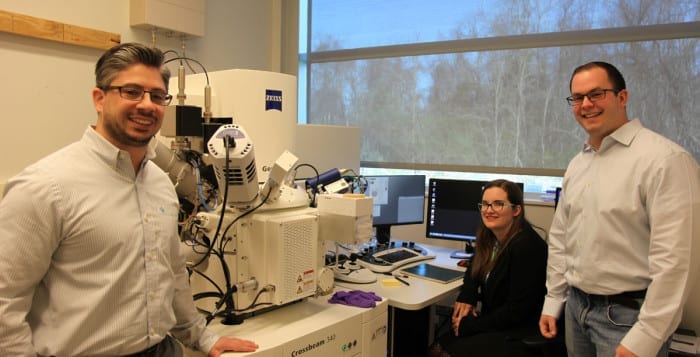Many of us have inflammation in our bodies, inflammation that is a potential underlying cause for a great number of diseases. Can we demonstrate the level of inflammation by measuring it? The answer is yes, otherwise I would not be writing this article.
One of the most widely studied biomarkers for inflammation is high-sensitivity C-reactive protein (hsCRP), also referred to as CRP. High sensitivity means that we can measure levels as low as 0.3 mg/L more accurately.
What is the significance of the different levels? In heart disease, individuals who have levels less than 1.0 mg/L are in the optimal range for low risk of inflammation. Levels of 1-3 mg/L is the average risk range and greater than 3.0 mg/L is the higher risk profile. Above 10.0 mg/L is less specific to heart disease, although still related, but more likely associated with other causes, such as infection and autoimmune diseases (1, 2). This biomarker is derived from the liver.
CRP is not specific to heart disease, nor is it definitive for risk of the disease. However, the upside is that it may be helpful with risk stratification, which helps us understand where we sit on a heart disease risk spectrum and with progression in other diseases, such as age-related macular degeneration, diabetic retinopathy, depression and autoimmune diseases.
Let’s look at the evidence.
Age-related macular degeneration (AMD)
AMD is the leading cause of blindness in patients over the age of 65 (3). Therefore, it is very important to help define risk stratification for this disease. In a prospective study, the results showed that hsCRP levels were inversely associated with the risk of developing AMD. The group with an hsCRP more than 3.0 mg/L had a 50 percent increased risk of developing overall AMD compared to the optimal group with less than 1.0 mg/L. But even more interestingly, the risk of developing neovascular, or wet, AMD increased to 89 percent in this high-risk group.
The significance of wet AMD is that it is one type of advanced-stage AMD that results in blindness. This study involved five studies where the researchers thawed baseline blood samples from middle-aged participants who had hsCRP levels measured. There were more than 2,000 participants with a follow-up as long as 20 years. According to the study’s authors, annual eye exams and lifestyle modifications, including supplements, may be able to stem this risk by reducing hsCRP.
These results reinforce those of a previous prospective study that showed that elevated hsCRP increased the risk of AMD threefold (4). This study utilized data from the Women’s Health Study, which involved over 27,000 participants. Like the study mentioned above, this one also defrosted blood samples from baseline and looked at follow-up incidence of developing AMD in initially healthy women.
The highest group had hsCRP levels over 5.2 mg/L. Additionally, when analyzing similar cutoffs for high- and low-level hsCRP, as the above trial used, those with hsCRP over 3.0 had an 82 percent increased risk of AMD compared to those with an hsCRP of less than 1.0 mg/L.
Diabetic retinopathy — a complication of diabetes
We know that diabetes affects significantly more than 10 percent of the population and is continuing to rise at a rapid rate. One of the complications of diabetes affects the retina (back of the eye) and is called diabetic retinopathy. This is a leading cause of vision loss (5). One of the reasons for the vision loss is macular edema, or swelling, usually due to rupture of tiny blood vessels below the macula, a portion of the back of the eye responsible for central vision.
The Diabetes Control and Complications Trial (DCCT), a prospective study involving over 1,400 type-1 diabetes patients, showed an 83 percent increased risk of developing clinically significant macular edema in the group with the highest hsCRP levels compared to those with the lowest (6). Although these results were with type-1 diabetes, patients with type-2 diabetes are at equal risk of diabetic retinopathy if glucose levels, or sugars, are not well controlled.
Depression
Depression is a very difficult disease to control and is a tremendous cause of disability. If we can minimize the risk of complications and hospitalizations, this is probably the most effective approach.
Well, it turns out that inflammation is associated with depression. Specifically, in a recent prospective observational trial, rising levels of CRP had a linear relationship with increased risk of hospitalization due to psychological distress and depression (7).
In other words, compared to levels of less than 1 mg/L, those who were 1 to 3 mg/L, 3 to 10 mg/L and greater than 10 mg/L had increased risk from 30 percent to 84 percent to 127 percent, respectively. This study involved over 70,000 patients.
What can be done to reduce inflammation?
This is the key question, since we now know that hsCRP is associated with systemic inflammation. In the Nurses’ Health Study, a very large, prospective observational study, the Dietary Approaches to Stop Hypertension (DASH) diet decreased the risk of both heart disease and stroke, which is impressive. The DASH diet also decreases the levels of hsCRP significantly, which was associated with a decrease in clinically meaningful endpoints of stroke and heart disease (8).
The DASH diet is nutrient-dense with an emphasis on fruits, vegetables, nuts, seeds, legumes and whole grains and de-emphasis on processed foods, red meats, sodium and sweet beverages.
Conclusion
As the evidence shows with multiple diseases, hsCRP is a very valuable nonspecific biomarker for inflammation in the body.
To stem the effects of inflammation, reducing hsCRP through lifestyle modifications and drug therapy may be a productive way of reducing risk, slowing progression and even potentially reversing some disease processes.
The DASH diet is a very powerful approach to achieving optimal levels of hsCRP without incurring potential side effects. This is a call to arms to have your levels measured, especially if you are at high risk or have chronic diseases such as heart disease, diabetes, depression and autoimmune diseases. HsCRP is a simple blood test with easy-to-obtain results.
References:
(1) uptodate.com. (2) Diabetes Technol Ther. 2006;8(1):28-36. (3) Prog Retin Eye Res. 2007 Nov;26(6):649-673. (4) Arch Ophthalmol. 2007;125(3):300-305. (5) Am J Ophthalmol. 2003;136(1):122-135. (6) JAMA Ophthalmol. 2013 Feb 7;131:1-8. (7) JAMA Psychiatry. 2013;70(2):176-184. (8) Arch Intern Med. 2008;168(7):713-720.
Dr. Dunaief is a speaker, author and local lifestyle medicine physician focusing on the integration of medicine, nutrition, fitness and stress management. For further information, go to the website www.medicalcompassmd.com or consult your personal physician.



















